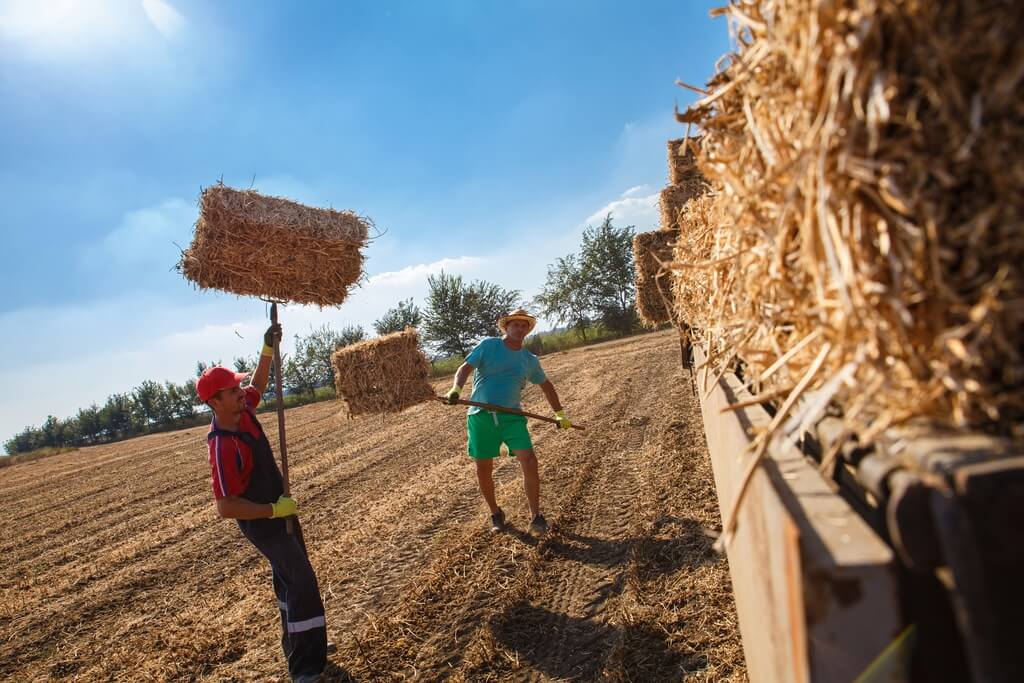New South Wales’s regions contribute a significant amount to our state’s and country’s economies.
However, due to the nature of the work, they also contribute more than their fair share of workplace injuries.
NSW has the largest and most diversified regional economy of any state in Australia.
Over a third of our population lives and works in the regions, contributing around a quarter of the state’s economic output in industries like manufacturing, mining, agriculture, construction, and healthcare.
A lot of this is thanks to small and medium enterprises (SMEs).
Unfortunately, SMEs account for an estimated 82% of all occupational injuries.
Part of this is probably because their small size means they have limited resources and lack formal WHS programs and training, especially in agriculture and construction, where there’s a high number of sole traders, family businesses and SMEs.
On top of this, these employees are exposed to higher health and safety risks than employees of larger enterprises.
And it’s harder for them to assess and control the risks.
What puts an employee at the most risk?
Some physical workplace exposures are more associated with injury risk and, interestingly, are more common in regional workplaces and industries.
These include:
- Manual handling
- Forceful exertions
- Highly repetitive motions with short work cycles
- Awkward postures of the neck, trunk, and extremities
- Whole-body or segmental vibration
- Mechanical contact stress from work positions or handling of tools and equipment
- High levels of ambient noise
- Extreme temperatures
- Work performed from heights
- Work performed around operating machinery
It’s also important to note the psychosocial stressors that we know can significantly increase the risk of workplace injuries:
- Work intensification
- Highly monotonous work
- Time pressure or deadlines
- Significant mental workload
- Ambiguous or conflicting roles
- Lack of decision-making authority
- Machine-paced work or piecework
- Isolation
- Weak supervisor support
- Demand or reward imbalance
- Job insecurity
While manufacturing, mining and healthcare are large regional employers, injuries in these sectors are generally lower than in the construction and agricultural industries.
This is because larger employers usually have more robust work health safety practices.
Agriculture
Agriculture employs less than 10% of Australia’s workforce, yet it consistently ranks as one of our most hazardous sectors.
The unique nature of many farms helps explain this.
A lot of farms are small and family-owned, with economic pressures fostering the use of less-expensive methods and equipment that may increase injury risk.
They often employ inexperienced temporary or migrant workers.
Many farms are also family homes, where children and young adults live and work at least part-time, and safety training is often learned through personal experience and from family members rather than through more structured processes.
Farm work is hard work.
It’s often seasonal and labour-intensive.
Workers are exposed to adverse weather conditions and subjected to concentrated periods of work that lead to time pressures, stress, and fatigue, which are linked to increased risk for accidents and injuries.
Some of the leading risk factors for agriculture-related injuries and fatalities include the operation of farm equipment and machinery, working with animals, work performed at heights, and falling objects.
Construction
Construction is also one of the most physically demanding and dangerous sectors.
Workers are regularly exposed to ergonomic and safety hazards from manual handling, power tools and equipment, noise, confined spaces and electricity, work performed from heights, excavation, irregular work hours, and exposure to weather extremes.
A construction worksite is also a complex and dynamic place.
Often, it includes multiple employers with different safety cultures and a high proportion of self-employed workers.
Plus, there’s the challenge of effectively disseminating safety information and interventions for effective uptake.
This sector also employs a disproportionate number of immigrants, independent contractors, on-call or day labourers, contract workers, temporary workers, and young workers.
All of these groups have a higher injury risk.
Because working conditions significantly influence worker performance and productivity, optimising health and safety has far-reaching implications for individuals, employers, and the broader economy.
That’s why identifying and implementing effective health and safety interventions at the policy level and in individual workplaces to foster sustainable and safe work environments are so important.
There is no one-size-fits-all strategy for reducing the risk of occupational injury.
Still, there are good strategies that can be implemented across the huge range of regional workplaces to improve safety and workplace performance.
- Create a ‘safety first’ culture where reporting incidents, near misses, and improvement suggestions are encouraged, and strategies to manage these are implemented.
- Provide all staff with adequate training and induction and have ‘refreshers’ at least annually for safety-critical tasks.
- Implement ergonomic interventions to reduce the exposure to manual handling, postural, vibration, repetition, and/or noise demands in the workplace.
- Prioritise machine safety – This can include staff having appropriate ‘tickets’ where needed, having competency-based reviews for staff operating machinery, having adequate safeguards and procedures (especially exclusion zones for staff), and ensuring machinery is regularly serviced and maintained to manufacturer requirements at a minimum.
- Be mindful of environmental and task demands that significantly impact the presence of fatigue and have adequate staffing, task rotation, and pacing strategies to manage these demands. These include exposure to extreme hot or cold, highly repetitive tasks, high cognitive load, vibration and impact tasks, and where protracted work shifts are required, such as work shifts of 12 hours and more.
- Proactively manage staff who have pre-existing or chronic health conditions – With an aging workforce, this risk factor is increasing. However, it can be effectively managed by accommodating a range of work tasks and rotating through these, transition planning for staff entering the later years of their work life (moving into lighter or more supervisory/management roles), and supporting flexibility with pause, stretch, or hydration breaks.
Interact Injury Management delivers over 30 years of regional experience providing workplace injury prevention and rehabilitation support across NSW.
If you’d like a partner to help you address your workplace safety issues, please contact us.




